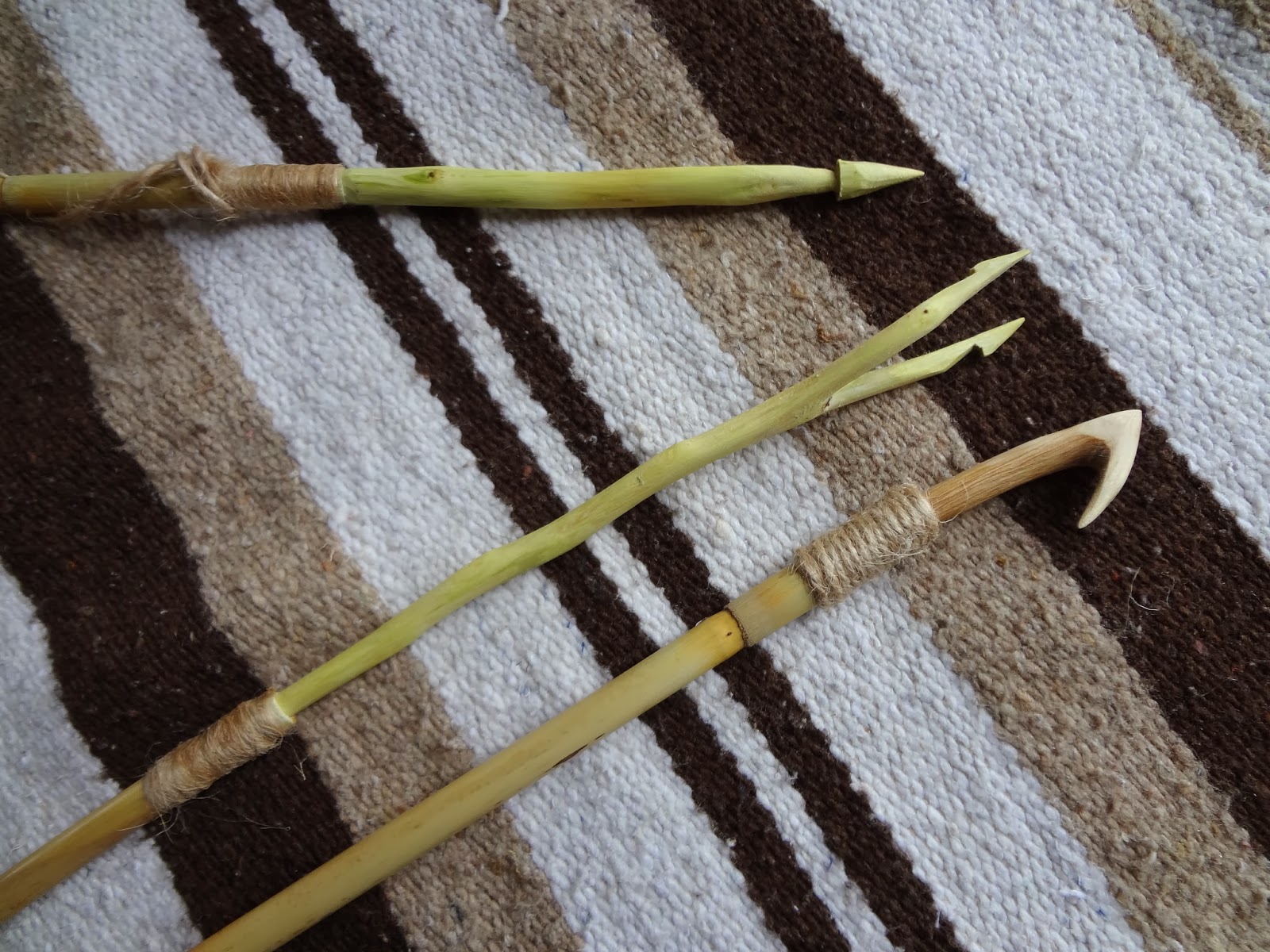When most of us think of the bow and arrow we imagine prehistoric
cultures hunting large animals like deer, bear and buffalo. But in some regions they were used more often
for fishing. One place in particular
that saw extensive use of the bow and arrow for fishing was the delta region of
Deep South Texas and extreme northeastern Mexico. It’s not hyperbole for people to refer to the
river traversing that expanse as the “Rio Grande” on the Texas side and “El Río Bravo” on the Mexican side. The word “grande” means “big” and the word
“bravo” means “fierce.” In ancient times
it was indeed a large and ill-tempered river.
Massive floods increased the river’s girth by many miles and likewise
turned much of it into a killer of both men and beasts. No one knows what tragedies occurred along
the Río Grande/Bravo but we can assume its name is well deserved. Of course, “progress” turned this once raging
river into a bloated sloth with dozens of dams built along its route from New
Mexico to the tip of Texas. Today the
Rio Grande (Río Bravo) is but a
vestige of its former times.
The earliest Spanish explorers to the region made frequent
note of coming across Indians who were fishing the tributaries, resacas, and
the great river itself with bows and arrows.
Others mention that family groups dwelled on islands within the Rio
Grande and traveled from one small village to another using canoes made from carrizo (Phragmites australis) and
perhaps dugouts of Sabal palm or Montezuma Bald Cypress. Some of these islands still exist in Starr
County, Texas near the town of Roma. In
my book, Adios to the Brushlands, (Texas
A&M University Press, 1997) I write about a trip to those islands. They are small compared to the larger islands
of ancient times but one still captures the sense of tranquility and remoteness
the people of those times must have felt.
They were hidden and protected and at the same time surrounded by an
abundant food source. The great river on
all sides of them teamed with sustenance ranging from fish to clams to small
river shrimp. In addition the people
planted gardens and made forays into the riparian forests along the river’s
banks to hunt deer and small game.
Perhaps the only drawback was swarming mosquitoes so the people covered
themselves with mud to thwart the insect’s seasonal attacks. Of course, there were also tropical diseases
to contend with from malaria to yellow fever.
Life had its challenges but it cannot be said that today’s lifestyles
are less stressful than those of the people who lived on the islands and surrounding
areas near the Rio Grande.
Spanish explorers were not prone to study the people’s
technologies other than in passing. Some
of them noted that the Indians used arrows made of “carrizo” (reed) with hardwood fore-shafts. Arrow points were sometimes hafted with asphaltum
acquired from las playas (the
beaches) along the Gulf of Mexico. We
can conjecture that a substantial trade in asphaltum worked its way inland from
the coastline. I have not read any
accounts of bows being backed and it is unlikely, given the high humidity and
rainfall, that prehistoric groups in the region used sinew or rawhide or any
type of hide glue given the water-soluble nature of those products. Most likely (based on my personal experience
making dozens of bows and arrows using resources from the region) the Indians
used cordage made from Agave (americana, lophantha, and scabra),and
pita (Yucca treculeana) to secure the
points and reinforce their carrizo
arrow shafts.
The photos represent a conceptual representation of what the fishing
arrows might have looked like. The
designs are, of course, universal and we know that North American fishing
arrows more-or-less followed similar construction criteria: barbed points, plant-derived
cordage, and in the case of reed arrow shafts, a hardwood foreshaft
incorporating the point and barb. The
three arrows pictured have foreshafts made from mesquite (Prosopis glandulosa). An arrow like the one pictured on the far right will plow
through a large fish like an alligator gar if the bow is of adequate draw
weight. Agave cordage is used to
reinforce the forend of the Phragmites arrow as well as to fashion the string
that retrieves the fish.
Arrow nocks were sometimes reinforced with cordage. Of course, no fletching was used on these
fishing arrows and it is quite possible that within the riparian zones these
same types of arrows may have been used to dispatch small game and even deer
snared or trapped within the sinuous trails that wound through the forests.
Bow fishing or hunting using tools you made yourself is in
fact no more challenging than if you were to employ store bought items. But learning to make selfbows and arrows takes
practice and patience as does learning to use them properly. Even so, acquiring those skills provides a
certain satisfaction and as many suggest places one ahead of those who venture
into the wilds as if nothing more than appendages of the sporting goods store.




Fascinating stuff. I'm wondering about how the mesquite foreshafts would be attached. Just from looking I'd say a combination of as close a pressure-fit as possible into the hollow carrizo reinforced by cordage?
ReplyDeleteYes, you want a pressure fit but not too tight since you want to save the reed shaft...particularly in the case of hunting arrows. Sometimes you will interchange fore-shafts when fishing so you want a snug fit but not so tight that you can't switch out to another shaft. The cordage is made from Agave americana.
Delete